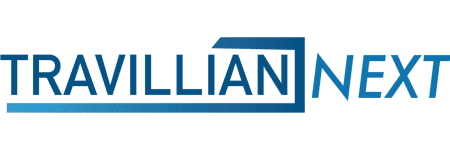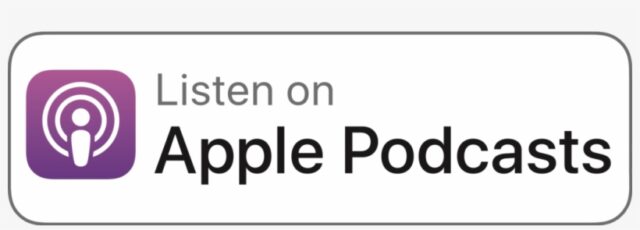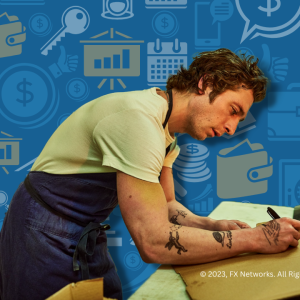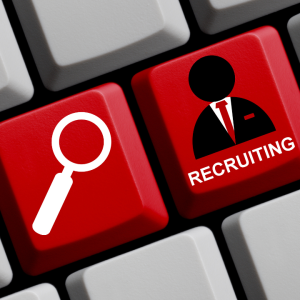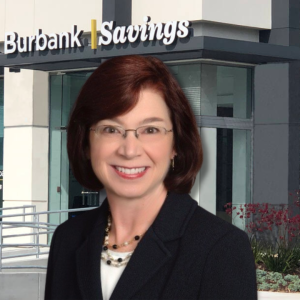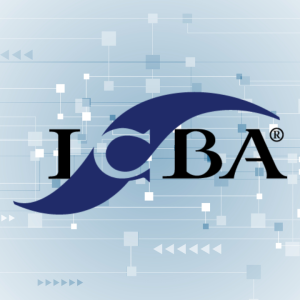- Billy and Nate’s Approach to Recruitment, Retention, and Employee Development
- Impact of M&A on SmartBank’s Growth Strategy
- Current Outlook on the Market and Credit
Talent, Growth and Culture: Looking at the Industry from SmartBank’s POV
00:20 | Intro / About Nate Strall’s Background
Brian Love: Excited to have another dialogue with the executive team from a bank that I know and admire. We’re going to talk about all things surrounding talent, strategy, M&A and this crazy economy that we’re in here in 2023. I’m joined by Billy Carroll, President, CEO and Director, and Nate Strall, Director of Strategy and Corporate Development, both from Smart Financial out of Knoxville, Tennessee.
Nate, you’re someone that Travillian knows fairly well and you joined SmartBank a couple of years ago. I wanted to start first hearing a little bit about your hiring at the company, because you come from a sell-side analyst background, and Billy, this question’s actually for you.
I just wanted to hear about the genesis of why Nate’s background was important and made sense for Smart Bank.
Billy Carrol: Nate and I met several years ago when we actually were doing our functional IPO. He was working with Raymond James at the time and helped us with that.
We just established a relationship, a friendship at that point. We kind of stayed connected over the next few years and as Nate’s career wanted to look to maybe explore some other options in his career, we got reconnected and at the time we had talked about kind of adding this strategy position.
A couple of years ago, we were probably about $2 billion I guess at the time. Maybe a little bit bigger than that. And we really weren’t quite sure what the position needed to entail but we knew we needed somebody to kind of just pick up a lot of new projects, bring us some ideas, especially on being able to model more M&A internally.
As Nate kind of came to us and we started talking about it, we kind of morphed the job description and it’s been great. Nate’s been a great addition to our team and again, just kind of having that utility player in a bank our size now, a little over $4.5 billion, it’s been a big impact on us in a number of ways.
Being able not only to help us with M&A modeling and looking at deals and strategy from that standpoint but also just being able to kind of take projects that maybe our CFO has toyed around with or our chief lending team or chief lenders toyed around with, and be able to take a project and kind of see it through.
And Nate’s great at pushing those through. It’s been great. We’ve kind of thrown him into the deep end of the pool on a number of things and he’s been swimming pretty well.
Nate Strall: From my perspective, I had spent 15 plus years on the investment banking side, put a lot of M&A together, always focused on the bank space and was fortunate enough to work with SmartBank on their functional IPO and then on the buy side for them as well back in 2017.
Had some nice deal flow with them and got to know them very well. So for me, as I was looking to transition my career, I wanted to go to a place that obviously was going to be active and looking at opportunities, but also an institution that would let me kind of dive into the other operating aspects of a bank.
SmartBank’s been absolutely fantastic about letting me do that and Billy has been very great about letting me dive into different products, and different strategies, and explore different areas where I can jump in and be helpful. I’ve been fortunate to find an institution that’s actively acquiring different businesses and also allows me the opportunity to strategize on different product sets in different areas. It’s been great.
5:22 | M&A
Brian Love: I wanted to talk about M&A. Is M&A kind of dead this year? What does it look like this year?
You and I had a conversation where some of your M&A has had a little bit more of a strategic sense to it because of different business lines.
Billy Carroll: It’s going to be an interesting year on a number of fronts.
Obviously, we got some industry headwinds with rates, maybe a little bit slower growth. You asked the question, is M&A dead? As we hear about it, Nate and I, we’ve talked a lot about it here in our shop, and I don’t think it’s dead in the current year.
I do think it could be challenging for a number of reasons. Obviously, you have some recessionary pressure. You’re going to have to dig a little bit deeper potentially on credit. Valuations may be a little bit softer, so may have some valuations.
You have the AOCI issue in some shops that could have an impact. I think there are a number of factors that could play into maybe it being a little bit slow possibly to start the year, but I personally think that you’re going to see some activity as we go through the remainder of 2023.
Maybe a little bit slow to start but I could see it picking up in the second half. This environment is going to be challenging for all of us and I think scale, while it’s not not the solution for everything, I think can really help and give banks of really all sizes up and down the spectrum, the ability to still have good paths forward.
We’re optimistic that there’ll be some opportunities as you know, you and I have talked about in the past. We shifted away a little bit last year with some organic opportunities that we wanted to focus on but I think M&A could still be very active in 2023.
Nate Strall: I think just like in any other troubling time, even though the striking of deals may not be so robust in the first half, the conversations are just as robust as they’ve always been, and I think that folks have these conversations, they kind of tee these things up, and as soon as there’s clarity in the market, that’s when you start to see kind of a deluge of deals.
While you may not see it in the first half in terms of actual public announcements, I think you’re having just as many conversations now and conversations around meeting other folks and folks spending time together, getting to know each other, as you ever have. I don’t think it ever falls off of anybody’s radar screen.
It’s just when the timing is right for deals to be struck. I think if we get clarity in the market and things settle down or we get a softer landing than maybe what’s projected, I think the second half could be a stronger year.
9:07 | Non-Bank Lines of Business
Brian Love: Billy, you had mentioned one of your more recent acquisitions had an insurance channel that wound up being a good pickup for you. Do you give thought to non-bank lines of business and is that more of a focus to make that insurance line a little bigger?
Billy Carroll: Nate’s been very active in working with our non-bank businesses as well.
We picked up a couple of years ago at an acquisition that the bank owned a full-service P&C insurance brokerage agency. Great business line one that we really liked. You don’t see a lot of banks heavy in the insurance space but it’s something that we felt like we could tackle.
So we took advantage of that opportunity. We had a great foundation with the agency that we acquired through that bank acquisition a couple of years ago. Took a year or so to kind of understand the business a little bit better, kind of dig in a little bit deeper. Nate’s dug in with me on it and we actually did another acquisition of another independent insurance agency that was in our Chattanooga market just a few months ago. We’re merging those two together and going to take that and kind of get that foundation a little bit bigger where we can kind of start to scale it throughout the company.
So, insurance is something that we like. We’re going to make some investments in it. We think it’s got some great upside going forward and that’s a big part of it. I think anytime we’re looking at an M&A deal if it can bring us another type of ancillary, revenue line, it’s something interesting.
We didn’t do it through a bank acquisition. We just did an acquisition of an equipment finance company a couple of years ago. That’s been very impactful too. And again, Nate’s been real involved in that.
Nate Strall: I think both of those acquisitions were well thought out and both of them were run by pretty successful entrepreneurs themselves. So, it’s been nice plugging them in. They’ve got a great growth mentality, and I think as time goes on, we’ll be seeing opportunities to add to each of those businesses.
I know our fountain equipment leasing company has grown by leaps and bounds way beyond what we ever projected it could do here in the first couple of years and so we’re really excited with that acquisition and same thing on the insurance side. It adds a nice line item for us.
And I think there’s a lot of opportunity throughout our footprint for us to cross-sell into that. And so, it’s a matter of adding talent to it, which I think we’ll do. It’s a big focus for us here in the next year to beef that area up and add to the talent. But I think both will be really excellent revenue production lines.
12:21 | Concerns Regarding Commercial Real Estate / Credit Concerns
Brian Love: I guess a lot of people in our industry are, I don’t want to say worried about credit, but it’s possible that maybe some credit issues arise in commercial real estate.
How does that change your 2023 goals? Or are you in the camp that doesn’t feel like that’s something that we need to worry about?
Billy Carroll: You always have to worry a little bit about credit, especially in a cycle where rates are increasing like we saw in 2022.
We used the word unprecedented a lot but it really was. I think the impacts of that sort of a fast, steep rate increase, may take a little while to play through, so I think you always have some concerns about it. That said, as we have looked internally and talked to other peer banks, there just doesn’t seem to be a lot of concern around it today.
We feel we’re still very bullish on where our economies and our markets are moving. As we talk to a lot of our clients and kind of do our annual reviews and quarterly reviews of credits, uh, we feel really good, uh, uh, about our book as, as most banks do right now.
That said, when you’ve got this sort of a rate increase, you may not see it today, but loans come up and you’re having to rework those renewals and reset those at a higher rate, debt coverages could be impacted. There could be some other things down the road that we would all need to be cautious of.
Especially in certain sectors, you talked about real estate. There could be some office sectors or multifamily sectors that some folks have a little heartburn over. We feel pretty good about where we’re sitting. They feel very good about where we’re sitting today.
I’m sure especially there are going to probably be some geographies where maybe things are not quite as robust. I don’t think we’ve got an issue on our hands, but could there be a few spots here and there in our industry that have a little pain? Maybe. But overall, we still feel pretty good and still bullish on our outlook for 2023. Growth is probably a little softer than what we’ve seen, as it should with higher rates but still feel pretty good about where we are.
Brian Love: And Nashville is one of your larger markets and that’s still booming. You’re also in Chattanooga. Some of these areas are very high growth.
Billy Carroll: When you look at our MSAs in the state of Tennessee and really as you go through our footprint into Alabama and the panhandle of Florida, we feel really good. Really all of our MSAs are great. Nashville’s market that’s relatively new, we’ve moved into the area here recently and I think that market has got a great upside to it. When you look at the south and you look at a lot of these MSAs, you’re seeing population inflow. You’re seeing corporate relocations.
Those trends are real. And as people move into these markets, they’re buying homes, shopping and dining out and using services. We’re pretty excited to be in the markets that we’re in.
15:56 | Talent Best Practices & Growing Your Team Internally
Brian Love: Nate, you were somewhat recruited to the company. How important is that recruiting piece, and especially as it comes to younger folks? Are there some best practices that SmartBank has around attracting those younger folks or high-potential future leaders?
Nate Strall: Yeah, I mean it’s obviously critical and Billy spends a lot of time on the road recruiting folks. When folks think about recruiting, they think about the revenue generation side.
We spend a ton of time recruiting those types of folks and recruiting business development folks but I think what we’ve found too is it’s just as important to recruit on the operations side and recruit the best and make sure we have the talent there.
We spend a lot of time thinking about that. Becca Boyd, our Chief People Officer, runs our Human Resources department and does an absolutely fantastic job focused on recruiting, making sure we’re developing our recruiting packages to be competitive in the market.
We spend a lot of time thinking about that and making sure we’ve got the right people in the right seats to build a foundation for the operations to move forward and to support a much larger organization than we are today, because that’s the plan, to drive growth.
I give a lot of thought to that around the executive table so it’s important for us to have a good plan going forward because it’s only getting harder to find good people and a lot of that’s growing them from within too and we spend a lot of time around that too.
Billy Carroll: As Nate said, number one, a lot of those efforts are led by our HR team and we’ve got a great group that isn’t just there to make sure that the payroll goes out, but it’s to make sure that we’re recruiting. We’ve got a learning and development group that’s kind of tied to our HR team.
They’re involved strategically with our culture so the robustness that we’ve got on that HR side is great. Nate alluded to one of the things that we’re doing too, we’re spending a lot of time on growing our own talent. That’s something that we found.
Obviously, we’re recruiting, and we like recruiting outside as well and bringing folks into our company that can bring new ideas and experiences, but we’ve also found that growing on our own internally is great. Pays great dividends and so we put a big emphasis on that.
We started it several years ago with a mentorship program internally where we have our emerging leaders and we pair them with more seasoned leaders in our company. That program has just continued to grow and we have a lot of our team members that request to be in there, both from the mentor to the mentee side.
Nate’s a mentor this year to one of our emerging leaders in our company. He’s bringing his skillsets and his experiences into that. We do that throughout our company and it’s been great. We also have a smart leadership program where we use a lot of internal content but it’s really for our new managers and new leaders that are supervising people.
Again, we have found that a lot of the gaps that we have are just getting this next level of managers up to speak and so we’re putting some real emphasis there. And then, in addition to our Smart Leadership program, we have a Level Up leadership program. Those are kind of our three internal programs.
The Level Up is for our next emerging leaders, the ones that are really starting to take on more and that has been a great program. We just started and we’ve had a couple of sessions of it now. We actually use materials in conjunction with the past Summit Leadership Foundation.
It’s been great. Pat Summit here in Knoxville. Legendary women’s basketball coach. Legendary basketball coach, period. Great pleasure to get a chance to know her over the years and not just a great coach, but a great leader and a great mentor to young people.
We’ve taken her foundation, through her son, who has been working with their foundation to put materials together that a lot of other businesses use. We had some ties to that group and started using it. It’s been great content that allows folks to understand how to really emerge as a leader and be a better mentor.
We have book clubs associated with that group, so we do a lot of healthy reads together. It’s just a great program. Those are just some of the things we’re doing trying to grow our own here internally.
21:09 | Talent Retention
Brian Love: As you both said to some degree, finding new talent can be difficult, which makes retention very important.
Keeping your talent might be the new focus for community banks. Keeping it, developing it, and making sure there’s a succession strategy and succession doesn’t just need to be a path to take your job, Billy. It’s really subject matter expertise, right? It’s continuing to grow that knowledge base and it sounds like you guys are doing that.
Billy Carroll: We’re really pushing succession planning down. A lot of times banks, especially smaller banks, think succession is your top couple of people. We’ve really pushed it down and we’re making sure that our managers are growing their own successors.
It’s a little more challenging to do in some areas because people don’t want to be training their replacement, but at the same time, your healthy organizations are doing that. They’re building that next level of leadership in their company to be prepared to take those spots.
And as Nate said, we want to have a growing company. What we typically see as opportunities emerge, maybe not just in the area that they’re working in today, but in other areas in our company. If we can encourage those internal leaders to take on new responsibilities, it’s a lot better than having to go out and recruit them.
24:03 | Work Culture / Working from Home
Brian Love: I read a quote and I think it was at AOBA, Ja Hillebrand from Stock Yards Bank stated something like, “work from home may have killed cultures at community banks.”
Do you agree? Have things gotten even tighter in your culture now in a good way or have you noticed it slipping because of these last three years?
Billy Carroll: I think he might’ve been on that panel with Tom Broughton from ServisFirst, right?
They were talking specifically about the remote work-from-home culture and I think that panel at AOBA really hit the nail on the head. There are some things that can be done remotely and we’ve done a few things in some positions to where we’ve been able to flex a little bit but at the end of the day, I think Ja was right.
It’s tough to build a culture if you’re not physically together. There are some jobs that you can do in a remote environment, but even those, you want to make sure that those team members are engaged and plugged in and coming to team meetings. That’s one of the things that we see, even for our folks that do a little bit more remote work, which we only have a handful, but even those folks we’re getting them plugged into our culture through team meetings and culture days and other things where they’re physically present.
But yes, I’m a big believer that you need to be in the office frequently. I think that you have to do that in order to build a strong culture. That’s something that we’re working on here.
Nate Strall: I agree. I think the in-person connection and just being able to walk up and down the hall and grab somebody and go to lunch and build a more personal relationship as opposed to just being on video chat makes all the difference in the world.
I’m a big believer in you need to be in the office with the folks that you’re working with. It makes it a lot more personal; it makes it a lot easier to work together and collaborate. It’s much easier for me to just walk into Billy’s office and run an idea by him than it is to write out a formal email or try to get him on a Zoom call or anything like that.
So, I’m a big believer in it as well. That said, one thing that we’ve done that’s a little. Innovative as you know, you do. We have allowed folks flex days where, you know, in certain departments will, will allow someone to flex out and, and, and work remotely for a day or two a week, uh, you know, to be adaptive.
And I think you have to do a little bit of that and sort of meet some folks in the middle. We’ve had good success with that. We haven’t really skipped a beat in those departments where we’re allowing that to happen. You have to adapt. And I think that’s the one thing our team and our leaders here are aware of and cognizant of is just the ability to adapt to the different environment.
I think there’s a combination of the two that work well and so far, lucky enough, we seem to have struck that balance.
Billy Carroll: Nate brings up a point. Workplace flexibility is something that I think we all need, quite frankly, we’ve always had workplace flexibility as part of our culture.
We want everybody to get out of here to go watch, you know, if you’ve got a kid doing a theater performance or a ball game, or you’re doing something with your family, that you need to be there. And we’ve always encouraged that as part of our culture. We’ve always been flexible, allowing our folks, if they need to slip out and do something. I think as Nate said, we’ve been more intentional about looking for those opportunities during these last couple of years. I think that has just made our healthy culture even healthier and it’s something I do think you have to do still.
We still have to get the job done, still got efficiency ratios we need to maintain. So you have to do it under the guides of everything that you’re doing with your metrics. But your best companies are doing that today. I think you’re always looking for ways to do that.
But again, be in person for the most part. Flex when you need to.
Nate Strall: Yeah, and I think back to the recruiting portion, to a certain extent, some folks are expecting that a little bit now. If you want to be an effective recruiter, you can make it work and it’s functional, it takes responsibility on both sides to make that work.
But I think it can be a powerful recruiting tool too if you can allow folks to flex out a day or two if they need it. I think it’s just an added bonus if you can provide that to somebody whom you’re trying to recruit.
Travillian’s Banking and FinTech Practice provides Search and Talent Advisory services to depository institutions across the country. Established in 1998, the firm has built a unique platform that touches every corner of the industry. To learn more, click here, or get in touch below!
|
Brian Love, Head of Banking & Fintech
(484) 680-6950 | blove@travilliangroup.com |
